The main idea behind creating Taboo Talks a public website is to let people feel free to share their experiences, ideas, views or content on topics they consider taboo.
Major threats to India
India is a nation that shares land boundaries with countries like Afghanistan, Pakistan, Nepal, China, Bhutan, Bangladesh, and Myanmar and shares maritime borders with Sri Lanka. India being a nation that never attacked any other country, is always under external threats from various sides, especially from Pakistan and China. But as with changing times and growing border tensions, and internal factors of India, India’s Security threats, and other nations. India might face more security issues, and tackling these security issues is one of the biggest challenges.
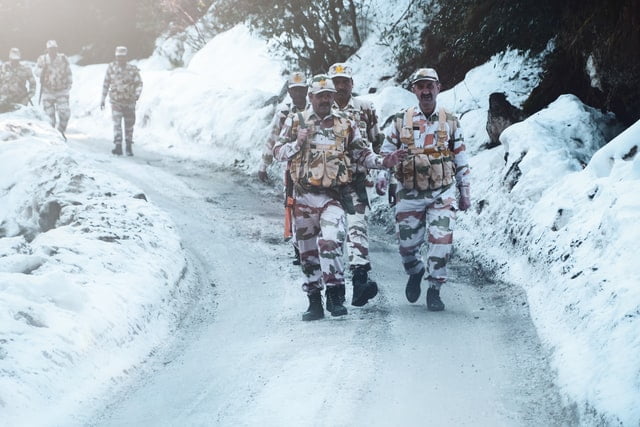
Over the years, we have entered into an era of complex and uncertain threats and challenges due to dynamic changes in the geo-politico-economic landscape and revolutionary changes in technology.
These threats include traditional, non-traditional, cyber, information, space, chemical, biological, radiological, nuclear, and propaganda.
India’s security issues can be divided into two sections:
1. Conventional threats
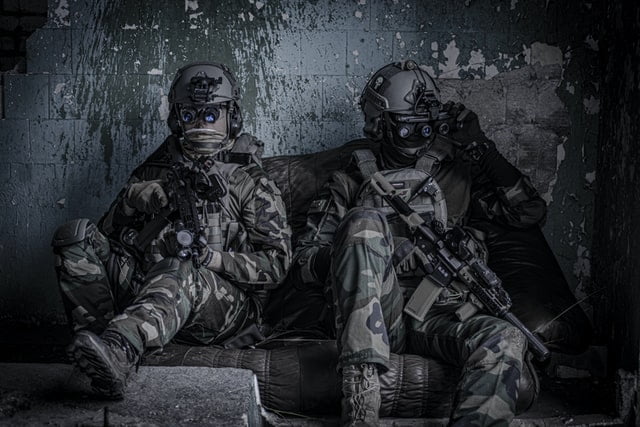
Conventional threats traditionally would be the military threats faced by a nation from another nation that impinges on its sovereign Integrity, trade, the maritime area under its jurisdiction as per international law in which the various laws, both international and national, apply.
2. Sub-conventional threats
This would cover a host of other aspects. The major ones being terrorism, piracy, natural disasters, drug trafficking, smuggling, illegal immigrants, changes in the climate and ecology, to name a few.
As most of our current threats pertain to conventional conflict over disputed land borders and sub-conventional challenges like insurgencies and cross-border terrorism, the Indian Army has been structured as a ‘two and a half front’ force, whereby, not only has the Army built up conventional capabilities to deal with threats along the Western and Northern Fronts, but it also can deal with the lesser ‘sub-conventional front‘.
For uniformed personnel, national security challenges as well-defined external or internal threats or the challenges of hybrid warfare in the future and mostly ignore non-traditional threats. While civilians have thought-provoking perceptions towards security challenges like:
1.) Lack of education among the masses leads to the election of non-suitable leaders with no national security vision.
2.) The triangle formed by the huge youth population, unemployment among the youth, and threat to food security is a deadly recipe detrimental to national security.
3.) Lack of social cohesion and harmony, dilution in the Integrity of institutions, the polarisation of people along the lines of religion, caste, and region, and non-inclusive growth pose a potent threat and challenge to national security.
External Threats and Challenges
If not irretrievably perilous, India’s national security landscape is stressed and susceptible to conflict with its neighboring rivals. After world war one The world has witnessed a reduction in full-fledged ‘State vs state’ wars. Hybrid wars appear to be the new norm. So, even with India, full-fledged war is quite less possible but still with the growing tensions with China and Pakistan in their respected disputed areas, which are LAC and LOC are growing day by day with lots of insurgencies by the border of Pakistan in the Area of Kashmir and terrorism growing in the valley is problematic.
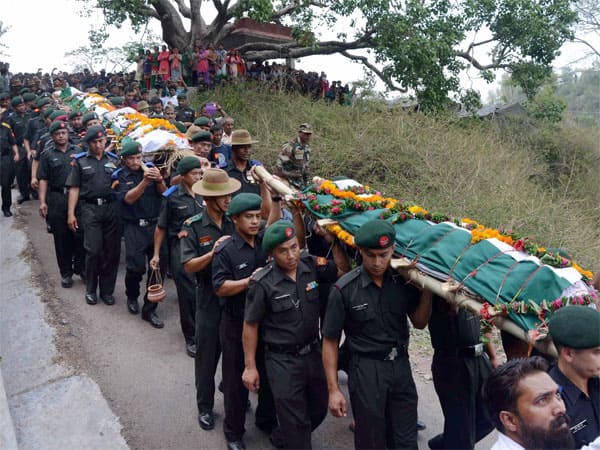
Also, growing tensions and the border have caused wars and frequent standoffs, which are growing every month. Doklam standoff and Galway valley clash are two examples of India-China cross-border disputes. India faces disputed boundaries and competing territorial claims with both Pakistan and China. The Line of Control (LoC), a de facto boundary with Pakistan, and the Line of Actual Control (LAC), an unmarked border with China, have remained contentious for decades. Beijing has also forged partnerships with other states in the Indian Ocean Region (IOR), if not of the same depth and breadth as its relationship with Pakistan.
The Yunnan province of China borders Myanmar (Burma), which serves as a bridgehead into the Indian Ocean. Thus, Beijing can pursue a more potentially offensive strategy in the Indian Ocean Region, with Pakistan and Myanmar offering dependable means of execution. Most of the sub-conventional threat confronting the Indian State stems from Pakistan, although insurgencies in northeast India also impose a military burden.
In addition to conventional and sub-conventional threats, India faces a significant nuclear threat from Pakistan and China.
Security of India’s long and porous coastline, offshore islands, exclusive economic Zone, and sea lines of communications in the Indian Ocean requires a high level of surveillance, situational awareness, rapid response capability, and synergy between all enforcement agencies to provide effective maritime security.
Also, a detailed examination of the economic and security implications of CPEC (China Pakistan Economic Corridor), Belt and Road Initiative (BRI), and the 21st-century Maritime silk road in India and the region is required.
Internal Threats and Challenges
India, which shares more than 15,00 KM with its neighbors, faces many internal security issues like Naxalism, Armed Insurgency, Money laundering, terrorism, and Drug trafficking.

Huge diversity in geographical regions, ethnicity, religions, languages, social discrimination, inequality in human development indices (HDI), Lack of inclusive growth, the polarisation of population based on religion and caste, and mass unemployment among the population youth makes India vulnerable to internal armed conflicts.
The aim of armed conflicts like the North-eastern internal issue like Naga insurgency, Bodoland issue, and Left-wing extremism or Naxalism in India primarily captures political power or seeks separation or secession or greater autonomy. We have been more successful in conflict management and not conflict resolution. Internal security is a function of political morality, responsiveness of the governance system, Integrity of institutions, social cohesion, the status of the economy, wealth distribution in the population, and social justice. India is suffering from dysfunctional institutions, which further add to the problems in the internal security environment.
Pakistan has continued to indulge in proxy-war-cum-cross-border-terrorism in J&K to destabilize India, posing a serious threat to India’s internal security.
Cross border drug trafficking
One of the least discussed issues I want to discuss here is the Cross border Drug trafficking issue. According to the United Nations office on drug and crime(UNODC) report, India is a major hub of the illicit drug trade.
India’s most Physical land border is missing; also, India’s geographical location is right between the world’s fulcrum of Opium and Heroin known as the Golden Triangle and Golden Cresent. Because of these two, India is vulnerable to illegal activities, which is a security issue.
What are Golden Crescent and Golden Triangle?
The Golden Crescent is the illicit opium production area located in Central, South, and West Asia. This region overlaps three Nations Pakistan, Afghanistan, and Iran. According to The UNODC, nearly 90% of the non-Pharmaceutical grade opium is produced in Afghanistan. From Afghanistan, Not Just India and Russia through the Balkan route, i.e. Through Iran, Turkey, Greece, and Bulgaria, Opium is supplied.
The Golden triangle is also an opium production area located at the intersection of Thailand, Laos, and Myanmar. After Golden Crescent, the Golden triangle is the second-largest producer of Opium. According to the UNODC, in 2006, the ‘Golden Triangle’ region was the largest opium producer, but recently, artificial drugs have been growing in the region.
India’s Security threat
India has traditionally been the land of natural drugs such as Opium. But since 2006, the consumption of synthetic drugs has increased as compared to natural drugs. Also, India has become a hub of precursor chemicals such as ketamine, Codeine, Acetic anhydride e.t.c. Factors such as difficult terrain, easy availability, and ineffective border management, the widespread poverty have also pushed people into the illicit drugs trade for easy money.
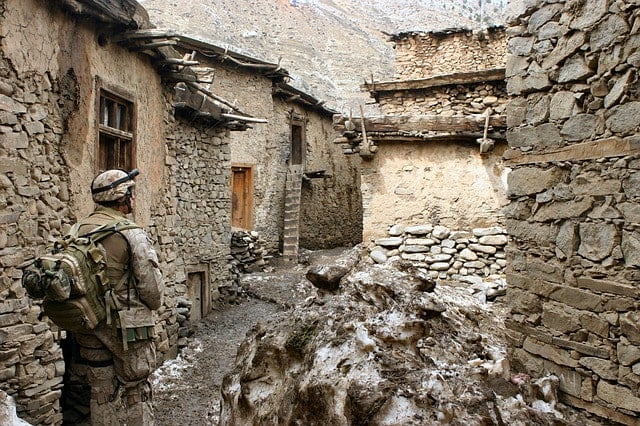
The Drug traffickers use the same route to smuggle drugs that the terrorists use to smuggle weapons. The nexus among drug traffickers, criminal networks, and terrorists facilitates drug trafficking in India and threatens national security.
In the northeast area, the insurgents sell drugs and give protection to the drug peddlers and get money for the weapons.
The easy availability of narcotics is also associated with the deteriorated law and order conditions and social disharmony. Also, this causes political instability and anti-nation stance, and corruption. The narcotics trade drains off State’s precious financial resources, which otherwise could have been used for developmental purposes.
Cyber and Space Domains
Cyber attacks are defined as deliberate actions to alter, disrupt, deceive, degrade, or destroy computer systems or networks or the information and programs resident in or transiting these systems or networks.”
India has witnessed a surge in cyberattacks amid the rapid adoption of digital services across the country. Nearly 1.16 million cases of cyberattacks were reported in 2020, up almost three times from 2019 and more than 20 times compared to 2016. Nearly 300% rise in cyber attacks in India in 2020. On average, 3,137 cybersecurity-related issues were reported every day during the year. Maharashtra, home to India’s financial capital, Mumbai, had malware inserted that flowed through its electricity grid, precipitating a power outage on 13 October 2020.
While looking at the offensive aspects of cyber-warfare, it is important to first protect our networks from cyber-attacks. The militarization of space is yet another dimension that needs to be explored for military purposes.
How to tackle these security threats?
1.) External Threats and Challenges:
These challenges can only be checked and tackled by the modernization of the Armed forces. When a Nation’s economy is on track and its Armed forces are fully capable with proper training, and with modern weapons, the external challenges can be effectively taken care of.
India has procured modern weapons and is improving daily with modern weapons and better security measures like better border fences and surveillance systems. For e.gOn 5 March 2019, the defense minister of India has launched the ‘Electronic Border Surveillance Project‘ at the India-Bangladesh border and the India-Pakistan border.
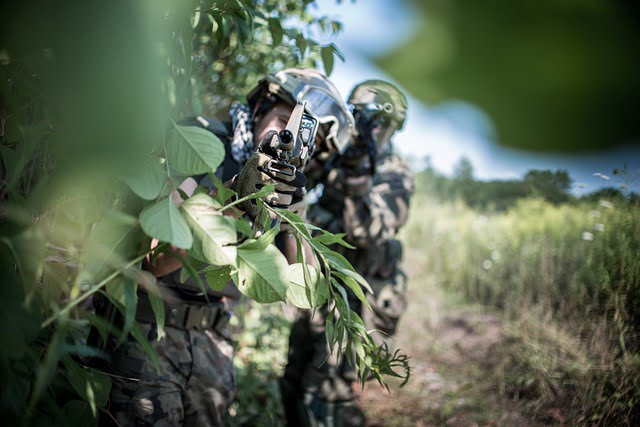
The Defence modernization of the Indian defense forces is a complex process covering issues about the balance between manpower and firepower and that between the acquisition of weaponry from indigenous sources and the import of arms.
India’s efforts to revamp and restructure its military in response to security challenges are characterized by a quest to meet the needs of the three services without compromising transparency and Integrity in the acquisition of weapons.
Also, with the proposal to have five theatre commands that will help in better planning & military response, aim to have a unified approach to fighting any future war.
India currently has 19 military commands, with 17 of them service-oriented. While both the Army and the Air Force have seven commands each, the Navy has three. India also has a Tri-Service Command Andaman and Nicobar Command besides the Strategic Forces Command (SFC), which looks after the country’s nuclear stockpile.
The aim is to bring all the 17 individual commands into five theatre commands. It might also have two more functional commands for training and logistics.
The rationale is that this will help better planning and military response and bring down the cost with better planning and accusation of modern weapons can effectively improve the logistics of Armed forces.
2.) Internal Threats and Challenges:
Internal threats fail to better manage government and political propaganda within the Indian borders to shake the core of the Indian sovereignty and Integrity.
Like Naxalismcan only be tackled with better political management by the government and providing better infrastructure and education with the Maoist affected areas and the citizens to oppose the idea and propaganda of Naxal Groups.
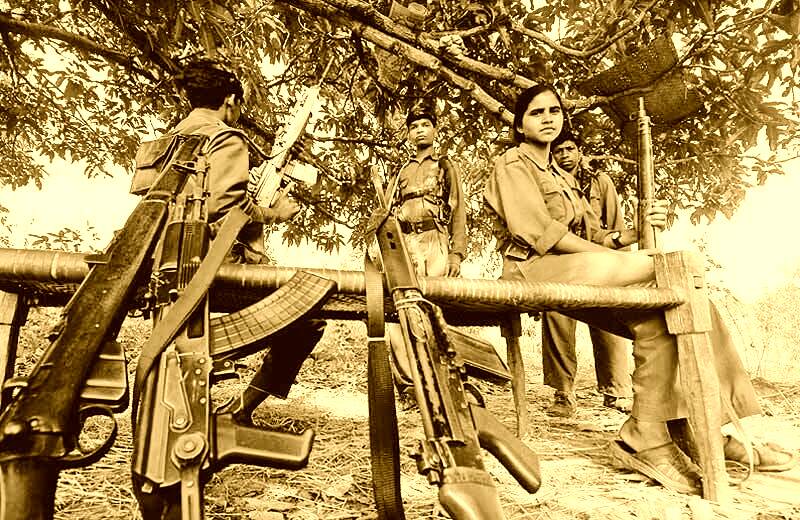
While handling border drug trafficking government had taken steps to tackle the situation like Stringent domestic legislation. According to this, India has enacted stringent Narcotics Drugs and Psychotropic Substances Act, 1985, which prohibits production, possession, sale, purchase, transport, storage, and consumption of drugs, ‘Narcotics Control Bureau (NCB)’ has also been set up under the NDPS Act, 1985.The NCB act as a nodal agency that coordinates with States to enforce drug laws. There is imprisonment from 1 year up to 20 years for the various scheduled offenses under the NDPS Act. The government can also take the land of the accused who has bought the property with money from Drug trafficking.
India has signed many bilateral agreements with its neighbors to prevent drug trafficking and coordinate these security threats. In February 2020, a ‘Combating Drug Trafficking Conference’ was organized with the participation of BIMSTEC members.
India has also signed all the UN conventions to prevent Drug trafficking:
- Single Convention on Narcotics Drugs, 1962
- 1971 UN Convention on Psychotropic Substances
- 1988-UN Convention against illicit trafficking of Narcotics Drugs, Psychotropic substance
Cybersecurity threats
In the attempt of creating a cyber-secure nation, the government of India has done numerous steps and signed various policies:

1.) CERT-In: The advancement in The Indian Computer Emergency Response Team (CERT-In), which operates as the national agency for tackling the country’s cybersecurity, has helped lower the rate of cyber attacks on government networks.
2.) Cyber Surakshit Bharat: To strengthen the cybersecurity ecosystem in India in line with the government’s vision for a Digital India, The Ministry of Electronics and Information Technology has launched the Cyber Surakshit Bharat initiative. This program was in association with the National e-Governance Division (NeGD).
3.) National Critical Information Infrastructure Protection Centre
NCIIPC is a central government establishment formed to protect critical information of our country, which has an enormous impact on national security, economic growth, or public healthcare.
NCIIPC has broadly identified the following as Critical Sectors:
a.) Power & Energy
b.) Banking, Financial Services & Insurance
c.) Telecom
d.) Transport
e.) Government
f.) Strategic & Public Enterprises
4.) Personal Data Protection Bill: The approval of the Personal Data Protection (PDP) Bill by the union government to protect Indian users from global breaches, which focuses on data localization. The bill implies the storage and processing of any critical information related to individuals only in India.
These new strategies will lay down protocols for prevention and audit to secure the government’s digitally connected water, health and education systems.
Conclusion
India has to use all instruments of its national power political, economic, diplomatic, military, social, technological, psychological, cultural—in a coordinated manner to address its security concerns. This can happen only if we end turf wars between different elements of national power and look at national security with a national outlook.
With new technologies and with the growing influence of defense forces, we can relax and have faith that National securities, whether external or internal, can be taken care of with better management plus we as citizens need to educate ourselves to tackle from our side, for example educating ourselves from Cybercrimes knowing Naxal groups propaganda that these can only be tackled if we oppose them over social media and withing small groups.
Taking about these situations and learning about nations background and issues, we as citizens can stop fake information from flowing and help out security forces, and working towards a beautiful nation.


